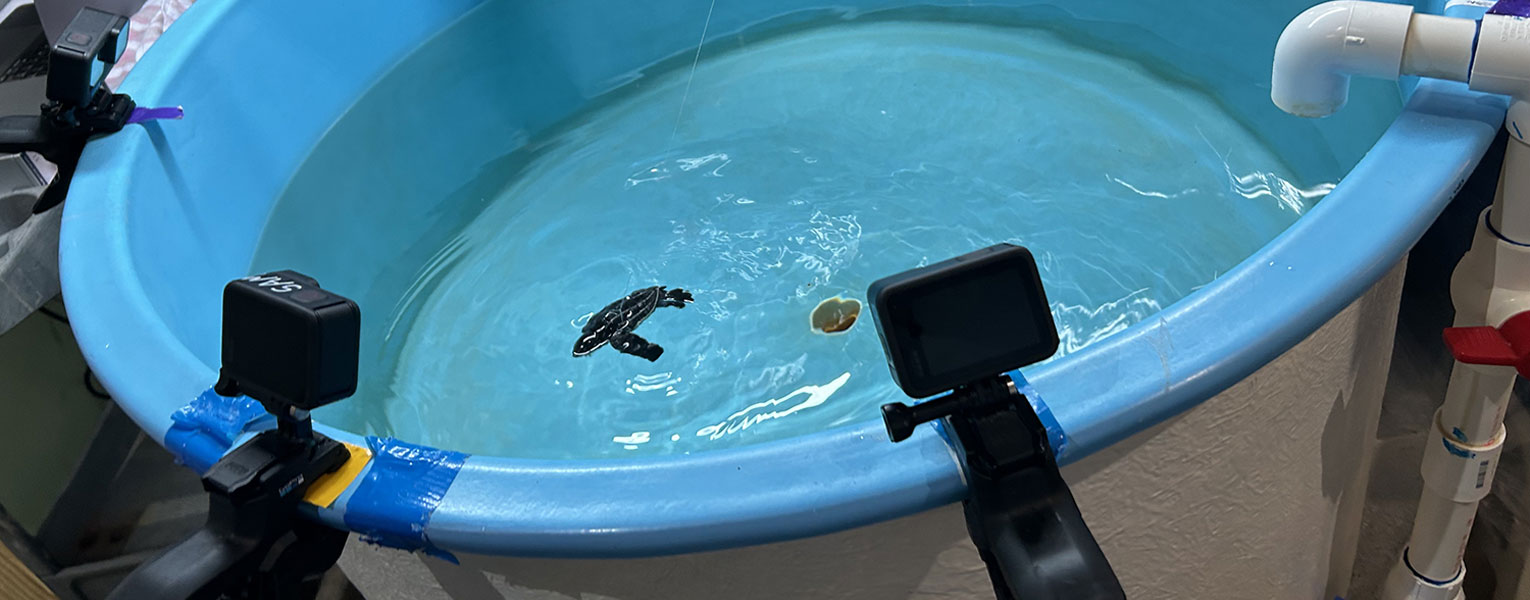7/26/2023
Studying Swimming Sea Turtles
FAU Graduate Students Wins Award to Analyze How Baby Turtles Swim
By Bethany Augliere
After sea turtles hatch from their sandy nests on the beach, they head for the open ocean, and don’t return to land until the females come back to lay eggs decades later. Where exactly they go during those lost years and how they get there remains a mystery, said Samantha Trail, a doctoral student in the Charles E. Schmidt College of Science.
Scientific studies that track the turtles suggest that although ocean currents play a major role in how these young turtles disperse, passively drifting along in the currents does not explain where these very young turtles end up, said Trail, who works in the FAU Marine Science Laboratory with Jeanette Wyneken, Ph.D., professor also in the College of Science.
To understand more about these years, Trail will examine swimming mechanics of baby turtles in three species: leatherback (Dermochelys coriacea), loggerhead (Caretta caretta), and green (Chelonia mydas) sea turtles by analyzing parameters such as force, stroke speed of their flippers, position of their flippers and body, range of motion, and more.
For this work, Trail was awarded a grant by the Florida Sea Turtle Grants Program, which supports sea turtle research, education and conservation. “I am very excited to receive this grant, because the research will help us provide better insight into the contribution of swimming to dispersal at the data-deficient lost years,” she said.
If you would like more information, please contact us at dorcommunications@fau.edu.
